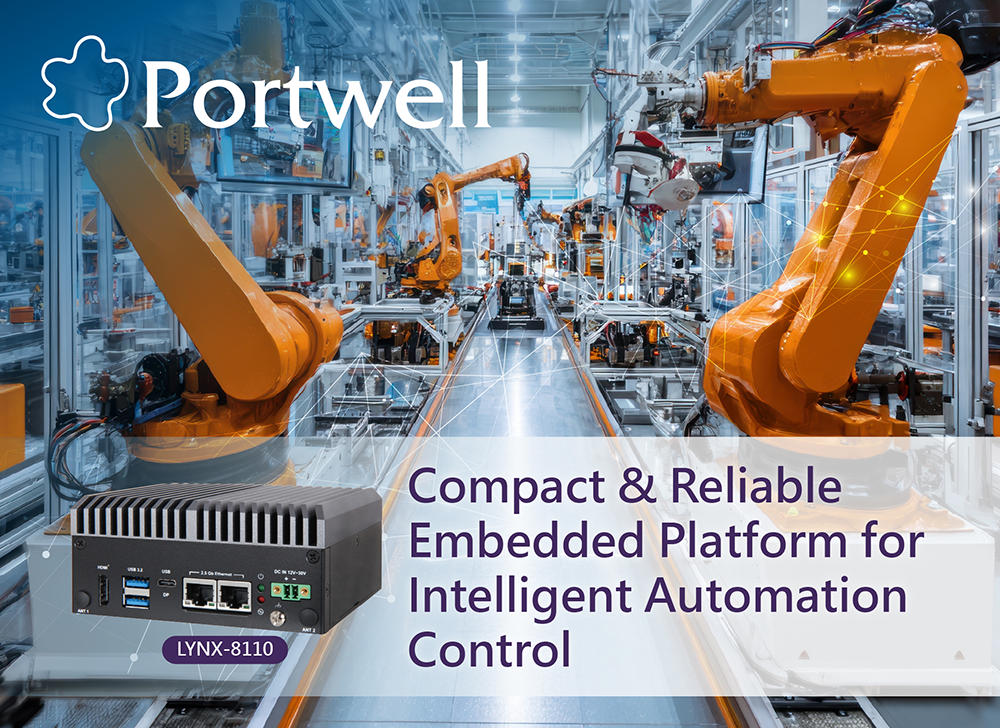
The industrial automation control market is undergoing rapid transformation as manufacturers worldwide embrace the next phase of Industry 4.0 and smart factory innovation. Modern production environments are evolving from isolated control systems to connected, intelligent networks that leverage edge computing, AI analytics, and IoT integration to achieve greater efficiency, precision, and flexibility. According to industry forecasts, global industrial automation spending continues to grow steadily, driven by increasing demand for predictive maintenance, data-driven decision-making, and energy-efficient operations.
This evolution requires automation systems capable of real-time data processing, seamless interfacing with sensors and PLCs, and reliable operation in harsh industrial environments. As production sites become increasingly distributed, edge computing has emerged as a cornerstone of automation architectures — enabling localized data processing closer to the source. Manufacturers now seek embedded hardware that combines compact size, long-term reliability, and AI-ready capabilities to power control units, machine vision systems, and industrial gateways.
Driven by the shift toward smart connectivity and sustainable production, automation solutions must now deliver continuous operation under extreme environmental conditions while minimizing downtime and maintenance costs. To meet evolving industrial control standards and protocols, hardware platforms must support flexible deployment, scalable communication interfaces, and future-proof computing architectures — ensuring long-term adaptability and investment protection.
Industrial automation control systems require embedded computing hardware that meets stringent demands for efficiency, reliability, and environmental resilience. Controllers, gateways, and data acquisition units must execute deterministic control logic, enable real-time communication, and support data visualization — all without system failure.
Key requirements for future-ready industrial automation systems include high reliability and endurance, ensuring uninterrupted operation even in environments exposed to vibration, dust, and extreme temperatures. Fanless and solid-state designs are preferred for their longer lifecycle and minimal maintenance. Hardware must also feature a compact form factor and modular I/O expansion to support flexible installation in space-constrained control cabinets and production lines, while accommodating diverse communication interfaces such as RS-232/422/485, LAN, CAN, and digital I/O.
Wide temperature and voltage tolerance is critical for withstanding environmental fluctuations, unstable power inputs, and electromagnetic interference. In parallel, strong edge processing capabilities have become essential as AI and data analytics move closer to the source. Systems must offer sufficient CPU and memory resources to process machine data locally — reducing network latency and enabling faster, real-time responsiveness.
As automation complexity grows, embedded computing platforms must deliver not only rugged design but also intelligent edge capabilities, serving as reliable bridges between machines, sensors, and enterprise systems.
Portwell LYNX-8110 industrial embedded system, powered by the Intel Atom® x7000RE Series processors, is engineered to meet the evolving requirements of industrial automation control with a focus on reliability, flexibility, and efficiency.
At its core, the Intel Atom® x7433RE processor delivers up to four energy-efficient cores based on Intel’s Gracemont microarchitecture, providing a significant improvement in single-thread performance and power efficiency compared to previous generations. This balance of performance and low power consumption makes LYNX-8110 ideal for industrial control gateways, motion controllers, and real-time edge analytics applications. It supports advanced instruction sets optimized for IoT workloads, ensuring smooth execution of automation algorithms, sensor fusion, and AI inference at the edge.
LYNX-8110’s industrial-grade design includes a fanless architecture that minimizes failure risks from dust ingress and mechanical wear, ensuring stable operation in factories or field deployments. Its compact form factor (4.72″ x 4.72″ x 2.13″) enables smooth integration into control cabinets and DIN-rail systems where space is at a premium. Supporting a wide temperature range of -40°C to 70°C and 12V–30V DC input, it guarantees dependable performance in diverse field conditions — from high-temperature production floors to outdoor installations.
In addition, LYNX-8110 incorporates onboard wide-temperature LPDDR5 memory and built-in eMMC storage, eliminating the need for SO-DIMM sockets and improving system robustness against vibration. These features ensure faster data access and stable OS operation, critical for real-time industrial control. Its modular I/O expansion supports customized connectivity options, allowing rapid adaptation to various industrial communication protocols.
For enhanced deployment flexibility, LYNX-8110 supports dual mounting options (wall-mount and DIN-rail), as well as M.2 expansion slots for SATA SSD and Wi-Fi modules — enabling high-speed storage and wireless connectivity. Combined with HDMI® and USB-C (DisplayPort Alt Mode) outputs, it provides modern display interfaces for HMI systems and visualization of operational data. These design advantages make LYNX-8110 an optimal embedded platform for automation controllers, robotic control units, and industrial gateways operating in space-constrained environments.
As industrial automation systems continue to evolve toward intelligent, connected, and autonomous operations, embedded platforms must provide not only durability but also computing intelligence at the edge. Portwell LYNX-8110, with its combination of power-efficient Intel Atom® x7000RE Series processors, compact fanless design, and wide environmental tolerance, addresses the core challenges of industrial control: reliability, scalability, and real-time responsiveness.
LYNX-8110 empowers customers to shorten time-to-market, ensure system stability, and adapt to future industrial requirements and evolving control standards. Its modular expandability and AI-ready architecture make it a forward-looking choice for OEMs and system integrators developing next-generation control systems.
From motion control and production line monitoring to intelligent gateways and factory-edge analytics, the compact, fanless, and robust Portwell LYNX-8110 embedded system stands as a powerful foundation for smart automation solutions — driving productivity, reliability, and digital transformation in modern manufacturing.